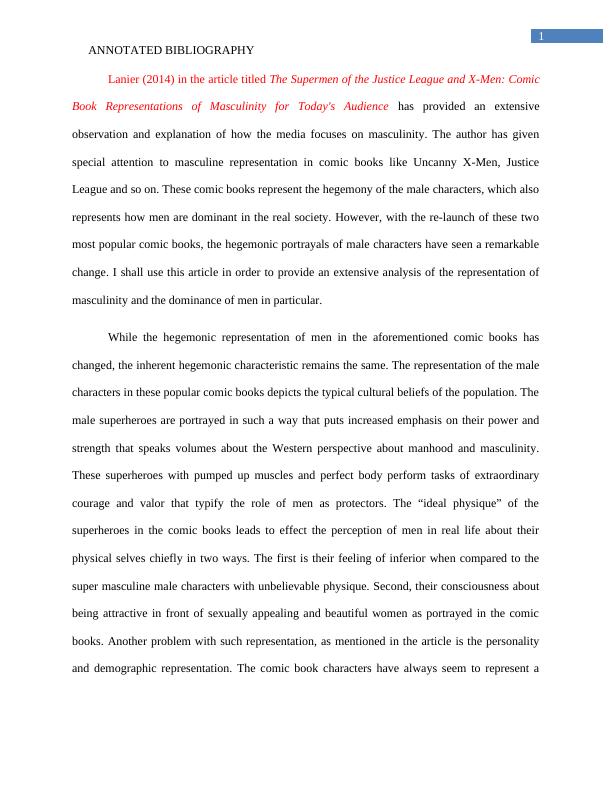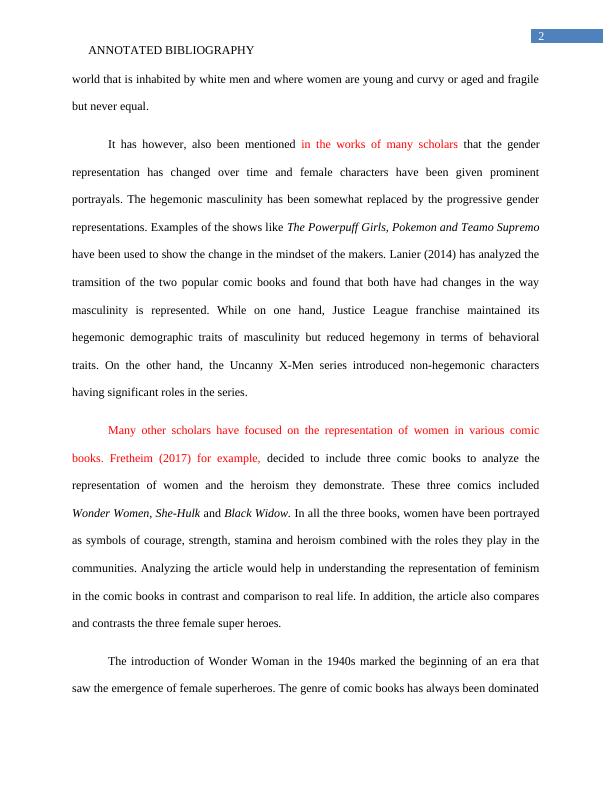Gender Representation in Comic Books
Choose a topic related to movies and television shows and discuss the representation of a specific culture in these media texts.
8 Pages2094 Words225 Views
Added on 2023-06-09
About This Document
This annotated bibliography explores the representation of gender in comic books, with a focus on masculinity and femininity. It analyzes the works of various authors and discusses the changes in gender roles in comic books over time.
Gender Representation in Comic Books
Choose a topic related to movies and television shows and discuss the representation of a specific culture in these media texts.
Added on 2023-06-09
ShareRelated Documents
End of preview
Want to access all the pages? Upload your documents or become a member.
Hegemonic Masculinity and Mental Health Issues Among Men
|6
|1086
|201



